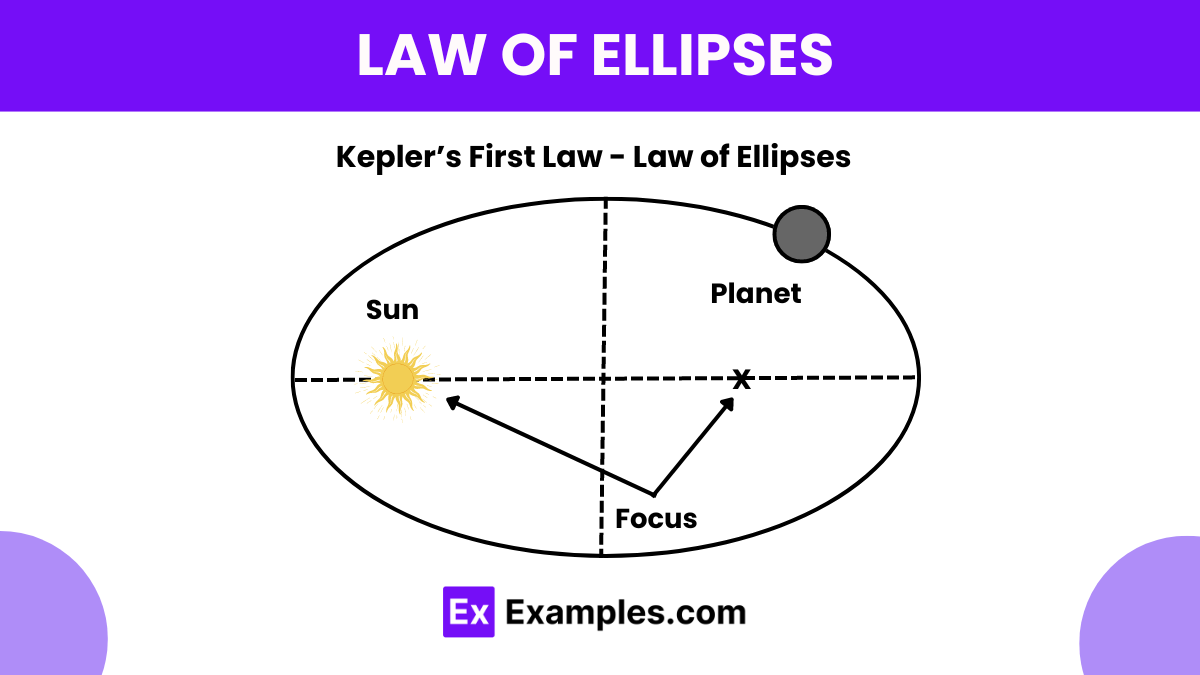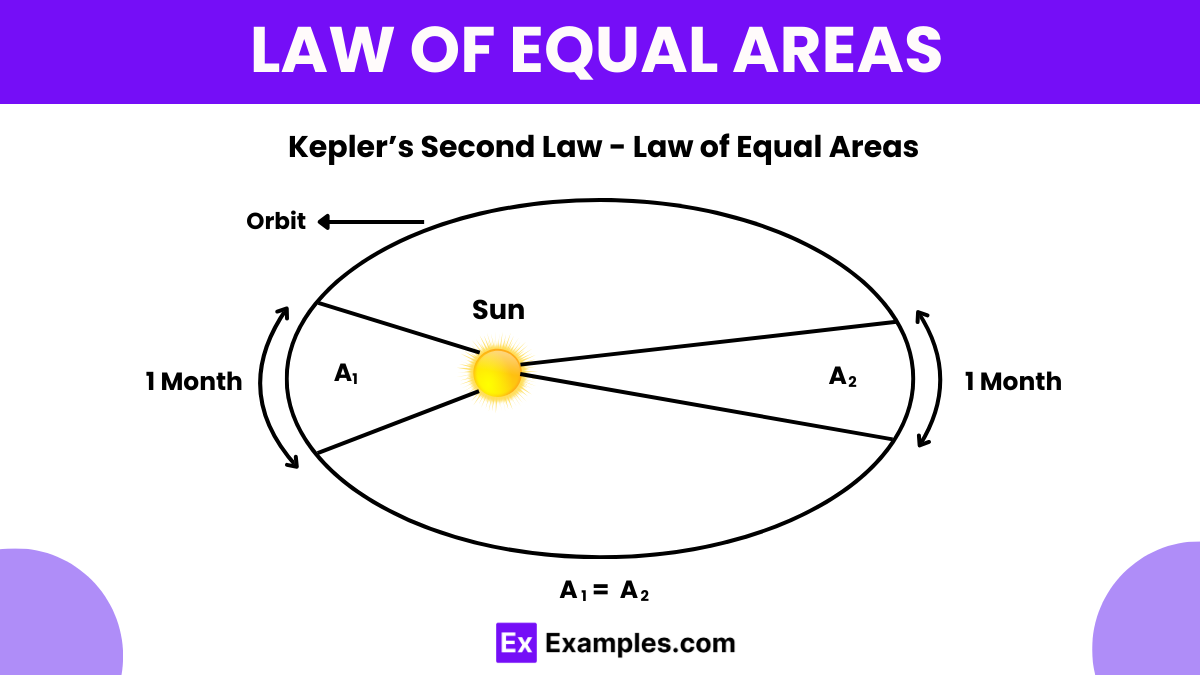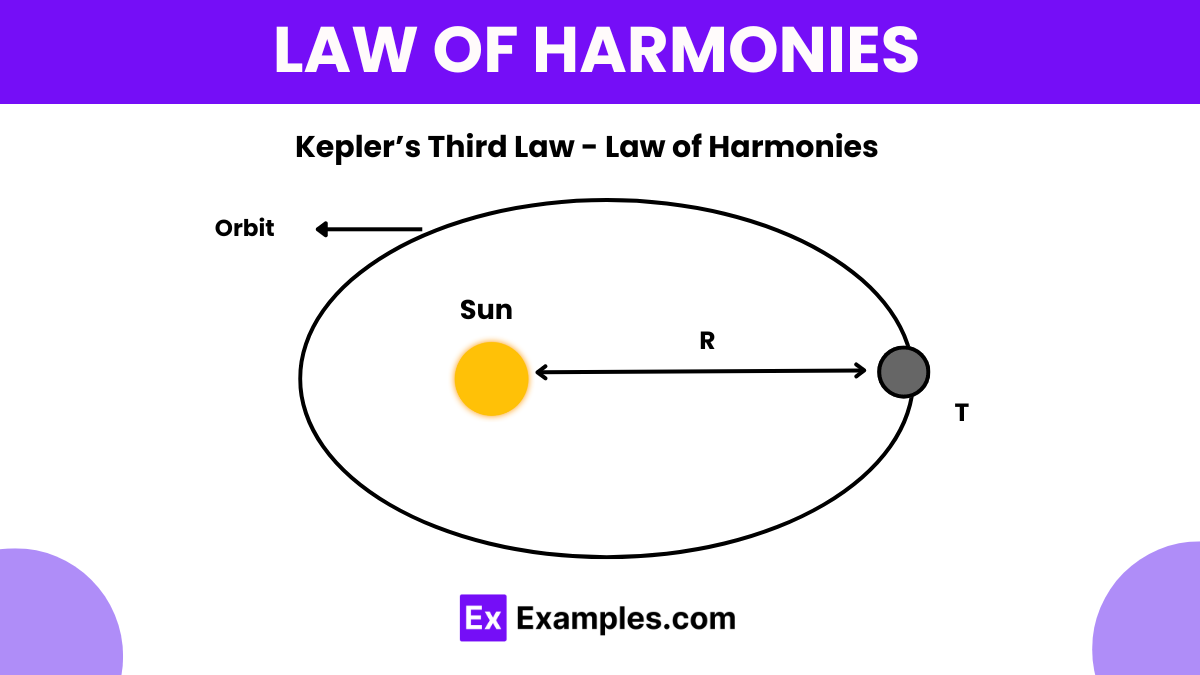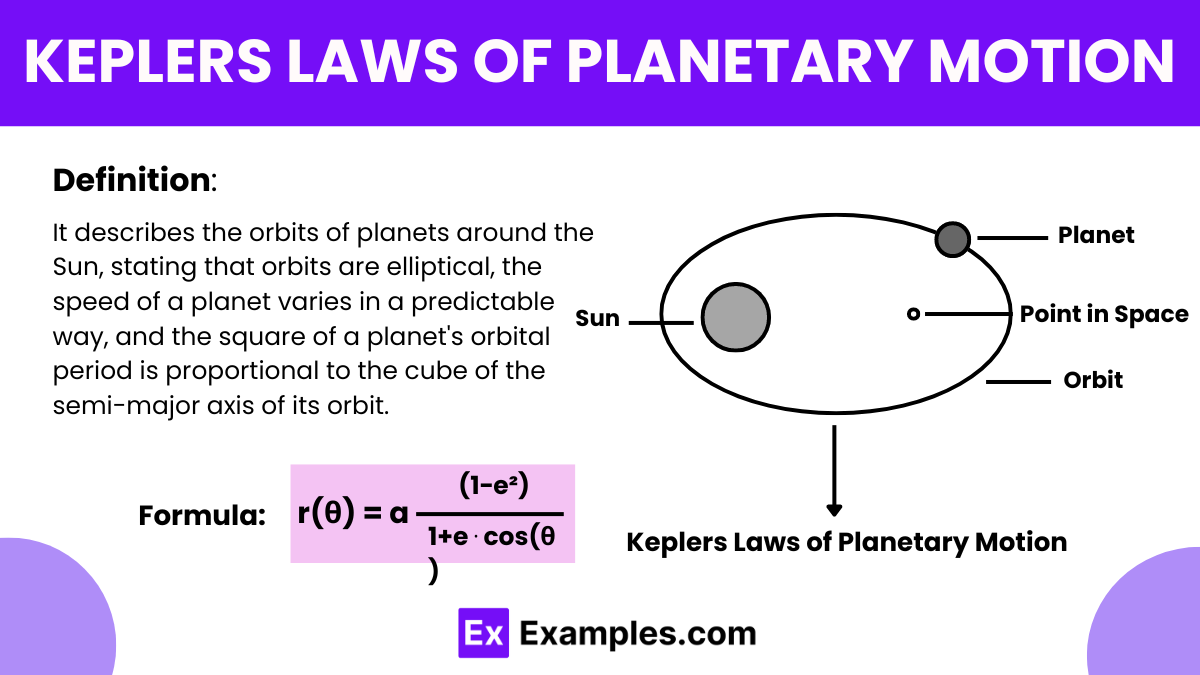Keplers Laws of Planetary Motion
Kepler’s Laws of Planetary Motion revolutionized our understanding of celestial mechanics, bridging the realms of physics and astronomy. Formulated by Johannes Kepler in the 17th century, these laws describe the orbital motion of planets around the Sun with unprecedented precision. Rooted in the laws of mechanics and physics, Kepler’s laws elucidate the geometric patterns and mathematical relationships governing planetary orbits, paving the way for modern astrophysics and space exploration.
What is Keplers Laws of Planetary Motion?
Here, Keplers Laws of Planetary Motion having 3 Law’s
Kepler’s Second Law – Law of Equal Areas
Kepler’s Third Law – Law of Harmonies
Keplers Laws of Planetary Motion Formulas
Kepler’s First Law – Law of Ellipses

The orbit of each planet around the Sun is an ellipse, with the Sun at one of the two foci of the ellipse. The mathematical equation describing an ellipse in polar coordinates is:
Where:
- 𝑟 is the distance from the Sun,
- 𝜃 is the angle measured from the periapsis (closest point to the Sun),
- 𝑎 is the semi-major axis (half of the longest diameter of the ellipse),
- 𝑒 is the eccentricity (a measure of how elongated the ellipse is).
Kepler’s Second Law – Law of Equal Areas

The line connecting a planet to the Sun sweeps out equal areas in equal times. Mathematically, this can be expressed as:
Where:
- 𝐴 is the area swept by the line connecting the planet and the Sun,
- 𝑡 is the time.
Kepler’s Third Law – Law of Harmonies

Where:
- 𝑇 is the orbital period of the planet,
- 𝑎 is the semi-major axis of its orbit,
- 𝑘 is a constant of proportionality.
Examples
Law of Ellipses
The orbit of Mars around the Sun is an ellipse, with the Sun located at one of the two foci. This means that Mars follows a path that is not a perfect circle, but rather an elongated ellipse, with the Sun slightly off-center from the center of the ellipse.
Law of Equal Areas
As a planet moves along its elliptical orbit, it covers equal areas in equal times. For instance, if a planet takes one month to move from point A to point B on its orbit, it will cover the same area when moving from point B to point C in the next month, assuming equal time intervals.
Law of Harmonies
The orbital period of a planet is related to the size of its orbit. For instance, Mercury, which has the smallest semi-major axis among the planets, has the shortest orbital period around the Sun, taking about 88 Earth days to complete one orbit. In contrast, Neptune, which has the largest semi-major axis, has the longest orbital period, taking about 165 Earth years to orbit the Sun once.
Applications of Keplers Laws of Planetary Motion
- Spacecraft Trajectory Design: Engineers use Kepler’s laws to calculate the trajectories of spacecraft, satellites, and probes traveling within the solar system and beyond. By understanding the geometric properties of planetary orbits, they can plan efficient routes for missions to other planets, moons, and celestial bodies.
- Exoplanet Detection and Characterization: Astronomers apply Kepler’s laws to study exoplanetary systems orbiting distant stars. By observing the periodic variations in a star’s brightness caused by the transit of planets in front of it, they can infer the presence, size, and orbital characteristics of exoplanets, providing valuable insights into planetary formation and evolution.
- Astrodynamics and Orbital Mechanics: Kepler’s laws form the basis for astrodynamics and orbital mechanics, essential disciplines in spacecraft navigation and control. Engineers use these laws to predict the motion of artificial satellites, space probes, and space stations, ensuring precise positioning and maneuvering in Earth orbit and beyond.
- Celestial Mechanics Research: Researchers use Kepler’s laws to study the dynamics of celestial bodies, including planets, moons, asteroids, and comets. By analyzing the gravitational interactions between these objects and their orbits, they can refine our understanding of the solar system’s structure, evolution, and stability over time.
- Planetary Formation Models: Astrophysicists utilize Kepler’s laws to develop models of planetary formation and evolution. By simulating the gravitational interactions between protoplanetary disks and nascent planets, they can elucidate the processes leading to the formation of planetary systems like our own solar system, shedding light on the origins of Earth-like worlds and their potential for habitability.
- Space Mission Planning: Mission planners use Kepler’s laws to optimize the design and execution of space missions, including planetary exploration, asteroid mining, and interstellar travel. By leveraging the predictable nature of planetary orbits, they can schedule launches, plan flybys, and target planetary encounters with precision, maximizing scientific return and mission success.
- Navigation and Timekeeping Systems: Global navigation systems such as GPS (Global Positioning System) rely on Kepler’s laws to accurately determine the positions and velocities of satellites in Earth orbit. By incorporating orbital dynamics into their algorithms, these systems can provide real-time positioning and timing information for terrestrial and aerospace applications.
- Education and Outreach: Kepler’s laws serve as educational tools for teaching students and the public about the principles of astronomy, physics, and planetary science. By demonstrating the geometric properties and mathematical relationships governing planetary motion, educators can inspire curiosity and interest in the wonders of the universe.
FAQs
Are Kepler’s Laws still relevant in modern astronomy?
Yes, Kepler’s Laws remain essential in modern astronomy and space exploration. They serve as foundational principles in spacecraft trajectory design, exoplanet detection, astrodynamics, and celestial mechanics research, contributing to advancements in our understanding of the universe.
What educational resources are available to learn more about Kepler’s Laws?
There are numerous educational resources, including textbooks, online courses, and interactive simulations, that explore Kepler’s Laws and their applications in astronomy and physics. These resources cater to students, educators, and enthusiasts interested in exploring the wonders of celestial mechanics and planetary motion.
How did Kepler’s Laws revolutionize our understanding of the cosmos?
Kepler’s Laws revolutionized our understanding of the universe by providing a mathematical framework for describing planetary motion. They laid the groundwork for Isaac Newton’s theory of universal gravitation and paved the way for modern astrophysics, space exploration, and our quest to unravel the mysteries of the cosmos.


